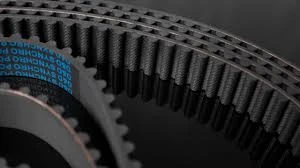- Arabic
- French
- Russian
- Spanish
- Portuguese
- Turkish
- Armenian
- English
- Albanian
- Amharic
- Azerbaijani
- Basque
- Belarusian
- Bengali
- Bosnian
- Bulgarian
- Catalan
- Cebuano
- Corsican
- Croatian
- Czech
- Danish
- Dutch
- Afrikaans
- Esperanto
- Estonian
- Finnish
- Frisian
- Galician
- Georgian
- German
- Greek
- Gujarati
- Haitian Creole
- hausa
- hawaiian
- Hebrew
- Hindi
- Miao
- Hungarian
- Icelandic
- igbo
- Indonesian
- irish
- Italian
- Japanese
- Javanese
- Kannada
- kazakh
- Khmer
- Rwandese
- Korean
- Kurdish
- Kyrgyz
- Lao
- Latin
- Latvian
- Lithuanian
- Luxembourgish
- Macedonian
- Malgashi
- Malay
- Malayalam
- Maltese
- Maori
- Marathi
- Mongolian
- Myanmar
- Nepali
- Norwegian
- Norwegian
- Occitan
- Pashto
- Persian
- Polish
- Punjabi
- Romanian
- Samoan
- Scottish Gaelic
- Serbian
- Sesotho
- Shona
- Sindhi
- Sinhala
- Slovak
- Slovenian
- Somali
- Sundanese
- Swahili
- Swedish
- Tagalog
- Tajik
- Tamil
- Tatar
- Telugu
- Thai
- Turkmen
- Ukrainian
- Urdu
- Uighur
- Uzbek
- Vietnamese
- Welsh
- Bantu
- Yiddish
- Yoruba
- Zulu
ඔක්. . 05, 2024 03:40 Back to list
Understanding the Benefits and Applications of Rubber V Belts in Industry
Understanding Rubber V-Belts An Essential Component in Mechanical Systems
Rubber V-belts are crucial components in many mechanical systems, designed to transmit power between rotating shafts efficiently. Their unique trapezoidal cross-section allows them to fit snugly into pulley grooves, maximizing contact and reducing slippage. This design feature not only enhances the performance of machinery but also extends the lifespan of both the belts and the equipment they are used in.
Understanding Rubber V-Belts An Essential Component in Mechanical Systems
Rubber V-belts are available in different types, including classical, narrow, and cogged belts, each suited for specific applications. Classical V-belts are the most commonly used type, providing a reliable means of power transmission for both small and large machinery. Narrow V-belts are designed for applications where space is limited, offering the same power transmission capabilities as classical belts but in a more compact form. Cogged V-belts feature grooves on their sides, which increase flexibility and reduce heat buildup, making them ideal for high-speed applications.
rubber v belts

One of the significant advantages of rubber V-belts is their ability to absorb shock loads. This characteristic is particularly beneficial in heavy machinery and automotive applications, where sudden changes in load can occur. The elasticity of rubber allows the V-belt to stretch and contract, minimizing the risk of damage to the engine and other components.
In addition to their utility in machinery, rubber V-belts are also environmentally friendly. The materials used in their production can often be recycled, reducing waste and promoting sustainability. Moreover, advancements in rubber technology have led to the development of belts that are more resistant to wear and tear, further extending their service life and decreasing the need for frequent replacements.
However, like any component, rubber V-belts have limitations. They can be affected by factors such as temperature, humidity, and exposure to harsh chemicals. Regular inspection and maintenance are essential to ensure optimal performance. Signs of wear, like cracking or fraying, indicate that a belt may need to be replaced to avoid potential breakdowns.
In conclusion, rubber V-belts are indispensable in various mechanical systems, providing dependable power transmission and enhancing operational efficiency. Their robust construction, coupled with their ability to absorb shocks, makes them suitable for a wide range of applications. As technology continues to evolve, we can expect further improvements in the design and materials used in rubber V-belts, ensuring they remain a key component in the machinery of the future. Understanding the importance and maintenance of these belts is critical for anyone involved in mechanical engineering or maintenance practices.
-
Upgrade Power Steering Pump Belt for Smooth, Quiet Operation
NewsAug.27,2025
-
Precision Timing Belt & Chain: Engine Performance & Durability
NewsAug.26,2025
-
Precision Lathe Drive Belts: Durable & Reliable Performance
NewsAug.25,2025
-
84.5 Serpentine Belt: Durable & Precision Fit for Your Engine
NewsAug.24,2025
-
Premium Ribbed Drive Belts for Quiet Power Transmission
NewsAug.23,2025
-
High-Performance Vehicle Timing Belt for Engine Precision
NewsAug.22,2025

